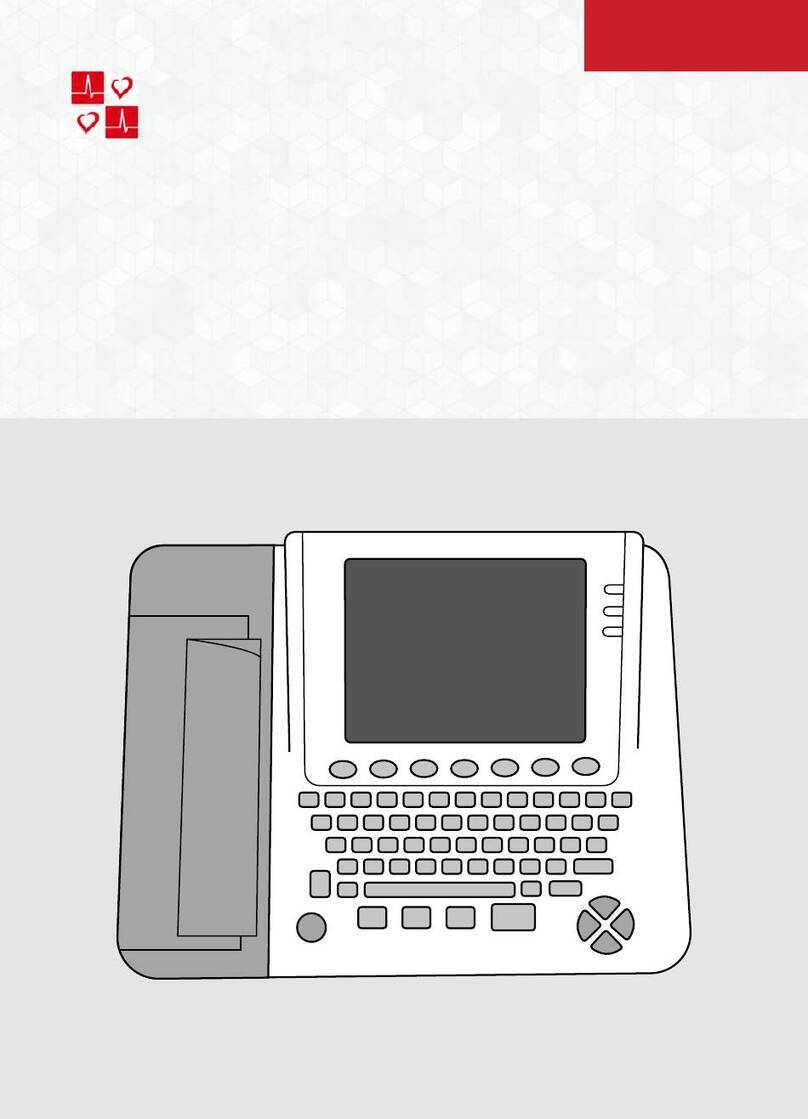
-4- Rev.1.4
1. Precautions
Please read this operation manual carefully, and operate GT-105 spirometry
system properly and safely.
1. Precautions
1.1 Contraindication and prohibition
1.1.1 Precautions for use
Prepare the device for operation according to instructions in this operation manual.
Check to be sure that all the cords are connected correctly and firmly.
When the device is used with other equipment, check to be sure that they can be used safely without causing mutual
interference.
Observe the patient closely. If any abnormality is observed, proper action, which may include stopping the test,
should be taken immediately.
Do not allow the patient to touch the device directly.
When disconnecting the cords, do not apply excessive force.
Clean the accessories, cords, and flow sensor after use. Keep them in a clean environment.
A bacterial filter must be used to reduce the risk of patient cross contamination.
If any abnormality is found in the device, Turn off the power and plug off the Flow sensor cord.
In case of malfunction, mark the device with the notice, "FAILURE" or "DON'T USE". And contact our sales office, our
authorized representative, or medical dealer in your area as quickly as possible.
GT-105 should be used by trained healthcare professionals and is not intended for patient operation.
Equipments connected to Signal I/O ports, such as RS-232C and USB have to comply with IEC60601-1. If not,
IEC60950. In order to connect other equipments, use a separation transformer for the power supply, or connect it by
means of a separation device.
1.1.2 Precautions for handling
Strong electromagnetic waves in the surrounding may cause noise in the curve or malfunction. If any unexpected
malfunction occurs during operation, check the electromagnetic environment and take appropriate measures.
Examples:
1) Use of a cellular phone
・The electromagnetic wave may cause unexpected malfunction.
Turn off the power source of cellular phones and radio equipment in the room or building where electrical equipment for
medical equipment is installed.
2) When high-frequency noise generated by other equipment enters through the socket for power source
・Identify the source of noise, and take countermeasures such as installing a noise limiter in the circuit.
・If possible, stop the operation of the equipment that generates the noise.
・Connect the power cord to another power supply socket.
3) Electrostatic effect (caused by electrical discharge in the device or in the surrounding)
・Completely remove the electrostatic charge from the operator and patient.
・Humidify the room.
4) Effect of thunderbolt
・An excessive voltage may be induced in the device when a thunderbolt occurs in the neighborhood. In such a case, operate
the device using an uninterrupted power supply.




























